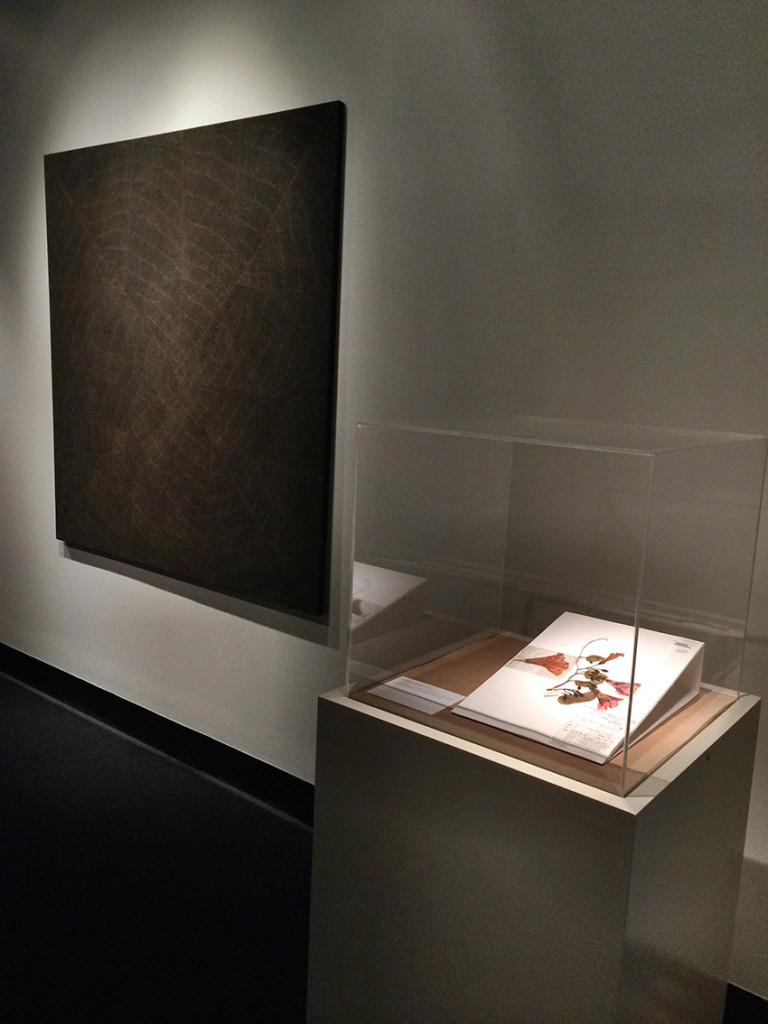Science & Art: 12 years of the Waterhouse Prize is currently on display at the South Australian Museum. The Waterhouse Natural Science Art Prize was launched in 2002. The exhibition features the overall winning works from the last 12 years, paired with material from the collections of the South Australian Museum, National Archives of Australia, the State Herbarium of South Australia and State Records of South Australia. The exhibition is on display until Sunday 19 July. The Museum is open 7 days, 10am – 5pm. Entry to the Museum and the exhibition is free.
Several specimens from the State Herbarium are on display along with the artwork to illustrate and explain the connection between science and art. Two examples are featured below.
Above is Margaret Loy Pula’s artwork Anatye (Bush Potato), overall winner of the 2013 Waterhouse Prize, with a specimen of bush potato (Ipomoea costata) from the State Herbarium.
Nikki Main’s work Flood Stones (below) was the overall winner of the 2010 Waterhouse Prize and references flood as an important phase in the hydrologic cycle. It is paired with examples of ephemeral plants from the collection of the State Herbarium: Pink tongues (Rostellularia adscendens var. pogonanthera), curly flat-sedge (Cyperus rigidellus), downy cress (Phlegmatospermum cochlearinum), button grass (Dactyloctenium radulans), cup velleia (Velleia connata).





 I have just returned from a two year fellowship in New Zealand, where I was fortunate to be able to work on a series of different projects and travel quite a bit around the islands. New Zealand has an amazing range of
I have just returned from a two year fellowship in New Zealand, where I was fortunate to be able to work on a series of different projects and travel quite a bit around the islands. New Zealand has an amazing range of 
You must be logged in to post a comment.